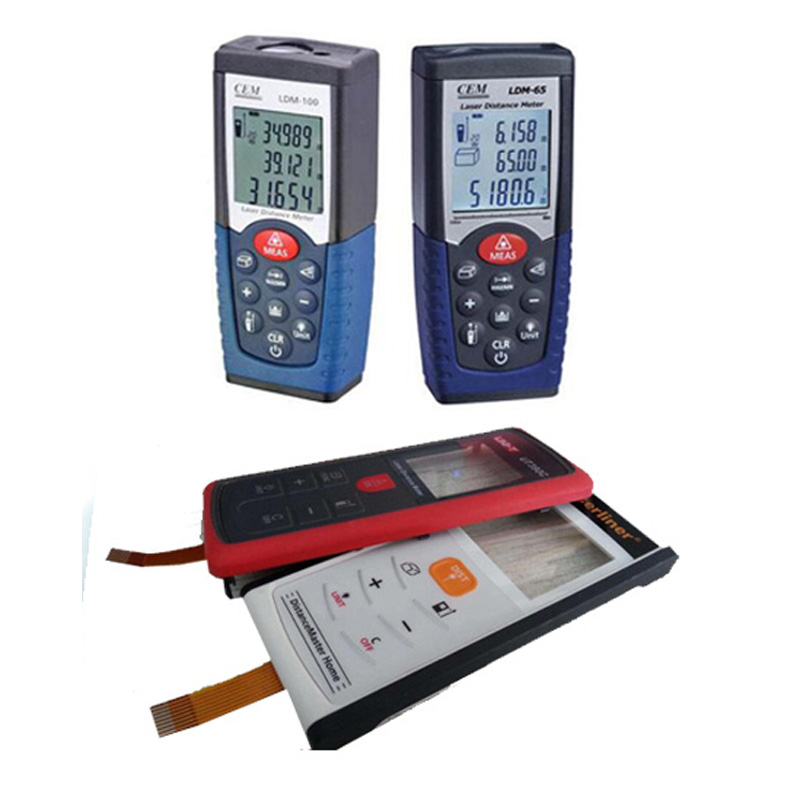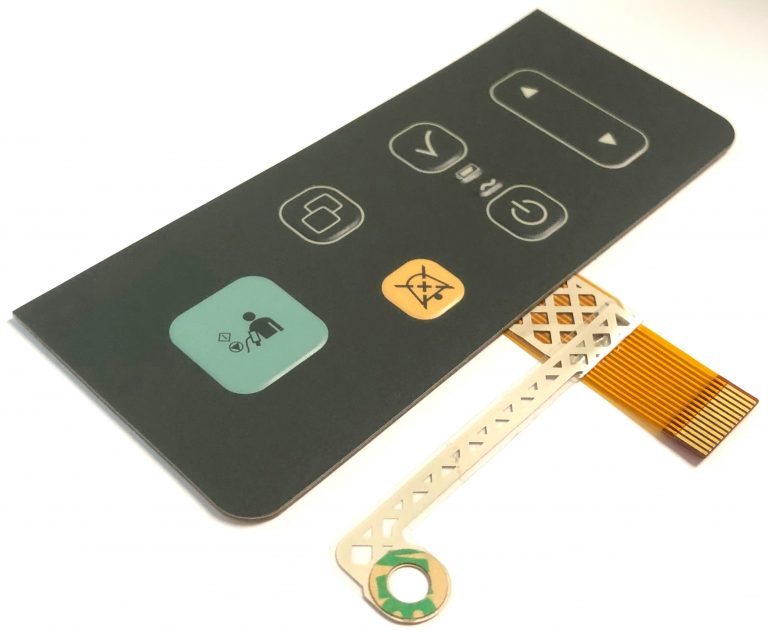Everything About Membrane Switch Over: A Comprehensive Overview for Beginners
Membrane switches are essential elements in modern-day electronics, using a distinct interface for individual interaction - membrane switch. Their split building and construction, including overlays and conductive traces, provides performance and resilience. Unlike standard mechanical switches, membrane switches present a streamlined design and personalized choices. Comprehending their vital functions and benefits can transform item style. The complexities of their application and layout factors to consider call for more expedition.
What Is a Membrane layer Switch over?
A membrane layer button is a type of electric switch that includes an adaptable membrane layer layered over a published circuit card. This design permits a streamlined and small interface, commonly utilized in numerous digital devices. Membrane layer buttons are frequently discovered in consumer appliances, medical tools, and industrial equipment because of their durability and resistance to environmental factors.The building typically includes multiple layers, such as visuals overlays and adhesive support, which supply responsive feedback and secure the wiring below. The operation of a membrane button is initiated when pressure is put on the surface, completing an electric circuit.These buttons are valued for their adaptability, enabling custom layouts and published graphics that provide to specific customer interfaces. Their inconspicuous nature minimizes space needs, making them excellent for applications where traditional buttons may not fit. Generally, membrane layer buttons supply a visual and useful remedy for modern electronic tools.
Secret Parts of Membrane Layer Switches Over
Membrane switches over make up a number of crucial elements that contribute to their functionality and performance. The leading layer, understood as the overlay, supplies the interface and is usually printed with signs or graphics. Under the overlay lies a spacer layer, which divides the conductive aspects and protects against unintentional activation. The following important component is the visuals layer, which enhances looks and ensures the longevity of the design.Conductive traces, generally made from materials like silver or carbon, are published on the circuit layer. When pressure is used to the overlay, these traces enter call, completing the circuit. In addition, a backing layer supplies structural assistance and can be made from materials such as polyester or polycarbonate. Together, these parts produce a reliable, easy to use interface appropriate for numerous applications, from home devices to industrial devices. Recognizing these aspects is crucial for anybody curious about membrane switch modern technology.
How Membrane Layer Switches Over Work
Comprehending how membrane switches over feature is vital for valuing their prevalent use in different gadgets. A membrane layer switch operates with a collection of layers, consisting of a visuals overlay, spacer, and a circuit layer. When pressure is related to the overlay, it presses the spacer layer, permitting the circuit layer to make contact and complete an electrical circuit. This action sends a signal to the gadget, motivating a response, such as activating a light or triggering a function.Membrane changes can be created with numerous attributes, consisting of tactile feedback, backlighting, and customized graphics, improving individual communication. Their building and construction allows for a sealed design, safeguarding the interior parts from dirt, dampness, and contaminants. This sturdiness makes them appropriate for varied applications, from customer electronic devices to commercial devices. On the whole, the simpleness and performance of membrane layer switches over add to their appeal in modern-day innovation.
Benefits of Membrane Layer Switches Over Mechanical Buttons
While mechanical switches have actually long been a staple in several devices, membrane switches over deal unique advantages that make them progressively appealing. One significant benefit is their slim account, enabling even more compact designs and better flexibility in product advancement. Additionally, membrane layer switches attribute an uniform surface, which boosts visual charm and streamlines cleaning, making them appropriate for atmospheres where hygiene is critical.Another advantage is their resistance to dust and wetness. Unlike mechanical switches, which can be compromised by ecological aspects, membrane buttons supply a sealed user interface that secures against impurities - membrane switch. Membrane buttons usually have a longer lifespan due to fewer relocating parts, resulting in boosted sturdiness and reliability.Cost-effectiveness is also a remarkable benefit, as membrane layer switches can be generated in bulk with reduced manufacturing expenses. These factors integrate to position membrane buttons as a practical choice to conventional mechanical choices in different applications
Typical Applications of Membrane Layer Switches
Membrane layer buttons are extensively made use of in numerous markets, especially in consumer electronics and industrial control board. In customer gadgets, they give a sleek, easy to use user interface, while in commercial settings, they enhance longevity and performance. Comprehending these applications highlights the imp source versatility and practicality of membrane switches in contemporary innovation.
Customer Electronic Devices Instruments
As consumer electronics remain to evolve, membrane switches have become a prominent option for a range of gadgets because of their adaptability and streamlined layout. These buttons are generally located in smart devices, tablet computers, and remotes, where room is minimal and visual appeals matter. Their low profile and adjustable layouts permit manufacturers to develop user-friendly user interfaces that improve the general individual experience. Additionally, membrane buttons are usually made use of in devices such as microwaves and coffee manufacturers, supplying user-friendly control options while resisting moisture and dust. The toughness and dependability of membrane switches make them ideal for day-to-day consumer products, making certain long life and constant performance. On the whole, their integration in consumer electronics mirrors a blend of performance and modern design.
Industrial Control Panels
The applications of membrane layer changes expand past customer electronics, finding substantial use in commercial control board. These switches are preferred for their durability and resistance to rough atmospheres, making them perfect for making and process control setups. They offer a dependable user interface for operators to regulate machinery, display processes, and change setups. Membrane buttons can be customized to match specific functional demands, including features like backlighting and tactile responses, improving customer experience. Their low-profile layout allows for combination right into various tools, while their ability to hold up against spills, dust, and severe temperature levels assurances long life. In general, membrane layer buttons contribute to risk-free and reliable operation in industrial applications, showing their flexibility and performance sought after atmospheres.
Factors To Consider for Designing Membrane Layer Switches Over
When developing membrane layer buttons, selecting the ideal materials is vital to assure longevity and functionality. Furthermore, recognizing layer configuration methods can substantially affect the switch's performance and user experience. These considerations play an essential function in producing reliable and effective membrane layer button layouts.
Product Option Relevance
Product choice plays a crucial duty in the layout and capability of membrane layer buttons. The selected materials directly affect the button's longevity, responsive feedback, and total aesthetic. Key considerations consist of the substratum, which need to supply structural integrity while enabling flexibility, and the graphic overlay, which requires to be resistant to put on and ecological variables. Conductive products ought to assure trusted electric performance, while adhesives must supply solid bonding without compromising the button's procedure. Additionally, compatibility with making procedures and end-user environments is vital; products should withstand differing temperatures, moisture levels, and discover this info here chemical direct exposure. Eventually, suitable product option not only boosts the membrane button's performance yet additionally adds to its durability and user satisfaction, making it a vital element of the layout process.

Layer Configuration Techniques

Regularly Asked Questions
How Much Time Do Membrane Layer Changes Typically Last?
Membrane layer switches generally have a life expectancy of 1 to 5 million cycles, depending upon usage and ecological problems. Elements such as design top quality and operating frequency substantially affect their longevity and total performance durability.

Can Membrane Layer Switches Be Custom-made for Certain Designs?
Membrane layer buttons can certainly be customized to accommodate particular designs, permitting diverse forms, colors, and performances. This flexibility makes it possible for producers to customize these buttons to satisfy unique aesthetic and operational demands effectively.
What Products Are Made Use Of in Membrane Switch Over Construction?
Membrane layer switches are generally built making use of products such as polyester, polycarbonate, and adhesive layers. These materials provide longevity, resistance, and adaptability to environmental aspects, making certain the switches work efficiently in various applications and problems.
Are Membrane Layer Changes Resistant or water-proof to Wetness?
Membrane switches can be created to be moisture-resistant, using specialized coatings and materials. However, their water-proof capabilities rely on building and construction top quality and specific applications, making it necessary to analyze demands for suitable performance in various atmospheres.
Exactly How Are Membrane Layer Switches Over Fixed if Damaged?
Repairing broken membrane switches commonly entails replacing the impacted layer or circuit. Service technicians might likewise use conductive glue or use specialized repair work kits, guaranteeing functionality is recovered without full replacement of the whole button assembly. Unlike traditional mechanical buttons, membrane layer switches present a streamlined style and adjustable choices. A membrane layer button is a type of electrical switch that is composed of a versatile membrane layered over a published circuit board. The procedure of a membrane button is launched when stress is used to the surface area, finishing an Get the facts electrical circuit.These switches are valued for their flexibility, enabling customized designs and printed graphics that cater to specific customer interfaces. While mechanical buttons have actually long been a staple in lots of devices, membrane layer changes deal distinctive advantages that make them increasingly appealing. Membrane layer buttons typically have a longer lifespan due to less relocating components, resulting in enhanced resilience and reliability.Cost-effectiveness is also a notable benefit, as membrane buttons can be generated in bulk with reduced manufacturing expenses.